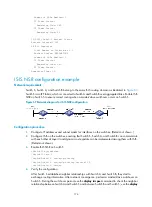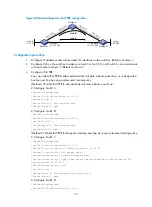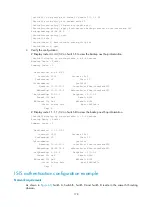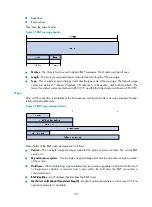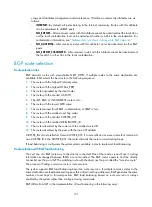
184
Configuring BGP
Hardware compatibility
The A5500 SI Switch Series does not support BGP.
BGP overview
The Border Gateway Protocol (BGP) is a dynamic inter-AS Exterior Gateway Protocol. The three early
BGP versions are BGP-1 (RFC 1105), BGP-2 (RFC 1163) and BGP-3 (RFC 1267). The current version is
BGP-4 (RFC 4271), and is the Internet exterior gateway protocol. The term "router" in this chapter refers
to both routers and Layer 3 switches, and BGP refers to BGP-4 in this chapter.
BGP has the following characteristics:
•
Focuses on the control of route propagation and the selection of optimal routes rather than the route
discovery and calculation, which makes BGP, an exterior gateway protocol different from interior
gateway protocols such as OSPF and RIP.
•
Uses TCP to enhance reliability.
•
Supports CIDR.
•
Reduces bandwidth consumption by advertising only incremental updates and is applicable to
advertising a great amount of routing information on the Internet.
•
Eliminates routing loops completely by adding AS path information to BGP route advertisements.
•
Provides abundant policies to implement flexible route filtering and selection.
•
Provides good scalability.
A router advertising BGP messages is called a "BGP speaker". It establishes peer relationships with other
BGP speakers to exchange routing information. When a BGP speaker receives a new route or a route
better than the current one from another AS, it will advertise the route to all the other BGP peers in the
local AS.
To simplify configuration, multiple peers using an identical policy can be organized as a peer group.
BGP runs on a router in either of the following modes:
•
IBGP (internal BGP)
•
EBGP (external BGP)
BGP is called "IBGP" when it runs within an AS, and is called "EBGP" when it runs between ASs.
BGP messages formats
Header
BGP has the following types of messages:
•
Open
•
Update
•
Notification





